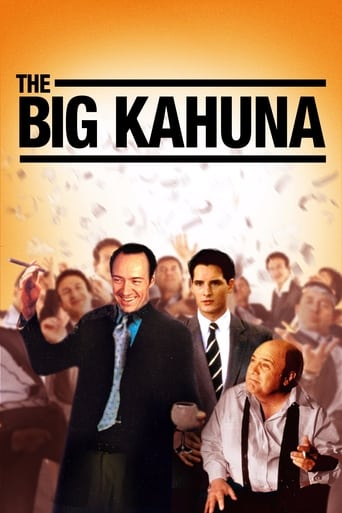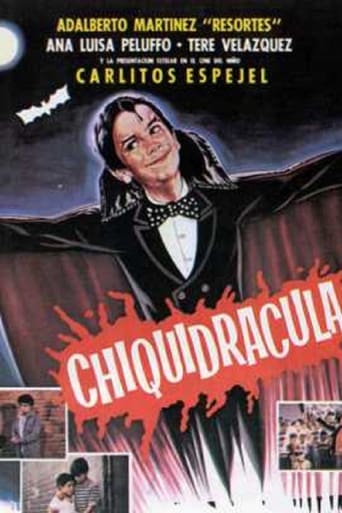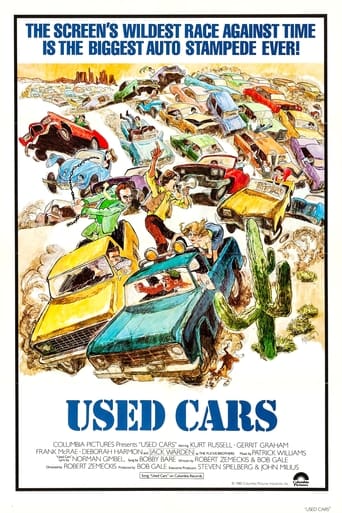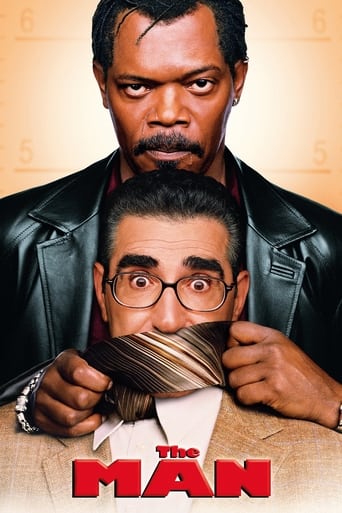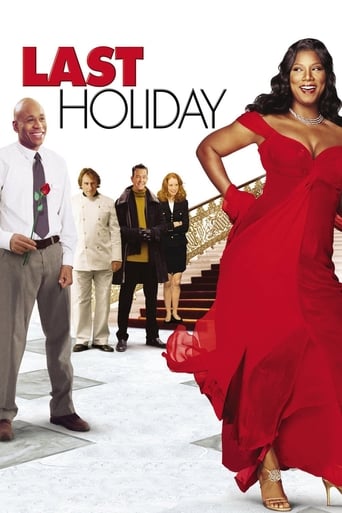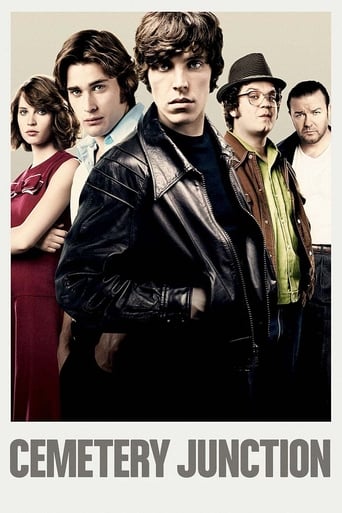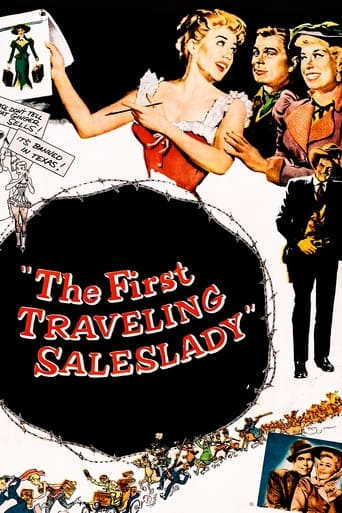
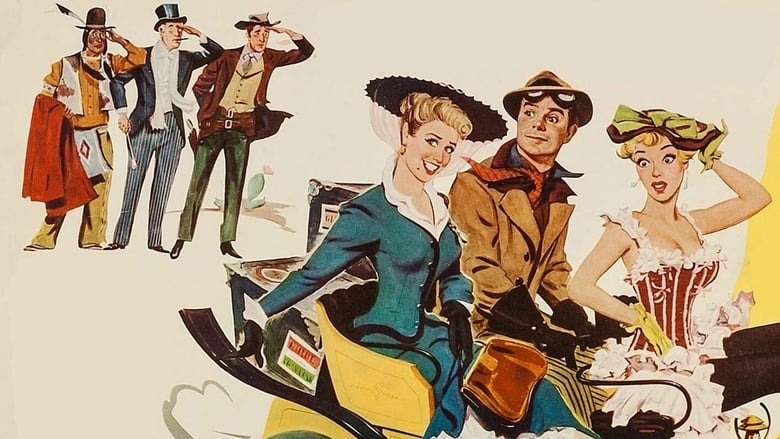
The First Traveling Saleslady (1956)
At the turn of the century Rose and ex-showbiz friend Molly get involved in selling steel. When they come unstuck with corsets they embark on the even more hazardous project of selling barbed wire to highly suspicious Texas cowboys.
Watch Trailer
Cast



Similar titles
Reviews
Memorable, crazy movie
How sad is this?
One of the worst ways to make a cult movie is to set out to make a cult movie.
The tone of this movie is interesting -- the stakes are both dramatic and high, but it's balanced with a lot of fun, tongue and cheek dialogue.
One of the last films to be made at RKO Studios, THE FIRST TRAVELING SALESLADY can boast a startling cast but very little else. Its star, Ginger Rogers, was only slightly exaggerating both ways when she said that she'd been there at the studio's beginnings and was there at its end. She's the saleslady of the title, selling barbed wire in Texas in the year 1897 while throwing her voice. I don't believe that they stole this plot idea from anywhere. Carol Channing is Ginger's buddy, a model (of corsets, not barbed wire dresses) who sings the only song in the movie while playing the traditional comic sidekick. James Arness is the villain who's not all that villainy, really, and seems to be having more fun playing the role than he ever did while playing Matt Dillon on Gunsmoke for 20 years. Barry Nelson is around as an automobile inventor and love interest for Ginger, but most attention will go to Clint Eastwood in a small role as a cavalry officer who's smitten by...Carol Channing! With Channing, Rogers and Arness in the cast, genuine idols of stage, screen and television respectively, what audience of 1956 would ever have guessed that Clint Eastwood would wind up the biggest idol of them all? Perhaps Clint himself had an inkling, as he flashes more smiles in his small role than he did in pretty much the rest of his career.The movie itself is a mild comedy which is pleasant enough for an hour or so before becoming quite tedious during its final half hour. THE FIRST TRAVELING SALESLADY ranks low on everyone's resume though probably not at the bottom of anyone's. It's a harmless way to while away the time, but that's about it.
One of the final RKO radio films produced in the last leap of faith in 1956. THE FIRST TRAVELING SALESLADY is a very enjoyable light comedy. What sets it apart from TV shows like PETTICOAT JUNCTION or films like OKLAHOMA both of which it strongly resembles is the A studio production values which allow the film to take on a lavish western look more akin to CALAMITY JANE. It is a jalopy western set in the horseless carriage days of 1899. Ginger Rogers was 43 and Carol Channing was 35 in production and given the mature age of both and the feminist slant of the story, it makes for a liberating tone for a film of the mid 50s. It is well worth looking at the last 20 films made at the RKO studio in this period by RKO TELERADIO PRODUCTIONS who revived the label after Howard Hughes trashed it. All 1955-58 RKO films are very well made, above the prior years of Hughes. TRAVELING SALESLADY is beautiful to see and has visuals cluttered with style and color. I thought it quite lavish in some scenes with overstuffed furniture and antiques that must have helped see unloved props get a final airing. In widescreen and technicolor it must have resembled GIGI or THE MERRY WIDOW. The most hilarious scenes to really really lap up involve a very young Clint Eastwood (25 years old) kissing Carol Channing! Fantastic! They elope together in the last reel! The railway station Ginger arrives at earlier at is the same as seen in OKLAHOMA, the last big musical distributed by RKO; Their very last film a minor but snazzy musical was THE GIRL MOST LIKELY also beautifully produced. Shame they gave up, but their films of the time, terrific as they were and modern in tone, just did not include respectable profits to continue. All other studios big and small had at least one blockbuster in this period, but alas RKO and Republic did not and folded.
This was Ginger Rogers last movie for the studio in which she was a star, RKO Radio. In fact, most of the interest in watching this weak attempt at comedy is the cast that was put together for the film. Director Arthur Lubin seems to have been directed by remote control and the screen play Devery Freeman and Stephen Longstreet supplied was not interesting. It's a mystery how this film was made, at all.Unfortunately, the film doesn't offer much to Ginger Rogers in the way of an colorful role to play. She was a much better actress that deserved better than this Rose Gillray, the corset maker turned barb wire saleslady. Barry Nelson is the man who believes in the future of the automobile and whose path to California keeps meeting Rose in the most unlikely places. Ms. Rogers and Mr. Nelson don't show much chemistry between them, and probably this is where the film fails, something than with another director, could have been solved, but which Mr. Lubin ignored.The film offers performances by Carol Channing, a Broadway star that never made it big in the movies. She plays Molly, Rose Gillray's assistant. In fact, she has the best lines in the film. A young Clint Eastwood is seen as Lt. Jack Rice, a member of the Rough Riders that Rose and Molly meet at the hotel. James Arness, another television idol, plays the rich landowner Joel Kingdom. Lastly, David Brian, an actor that tended to be seen in heavy roles, makes a good appearance as James Carter, the barb wire manufacturer.This is a film to be watched as a curiosity.
This film is an interesting time capsule. It was made in the late 1950s, and it shows some stars who are on their way up, and one who is on her way out. An unfair thing to say to Ginger Rogers, but this is not one of the films (like KITTY FOYLE, her movies with Fred Astaire, THE MAJOR AND THE MINOR, or ROXY HART) that people remember her for. Ginger would still be making films until 1965, her last one an Italian comedy with Ray Milland, but they were all lesser efforts - although she did deliver good performances. But three (no, make it four) of the stars actually were on their way up - or seemed to be. They are Clint Eastwood, Carol Channing, James Arness, and Barry Nelson. It was the sixth or seventh movie Eastwood had appeared in, and (I believe) the first one where he 1) had substantial dialog to give his film persona a real character, and 2) he was one of the male leads and was paired with the second female lead whom he romances, kisses, and marries. This is Ms Channing, playing "Molly", Rogers closest friend and partner in the saleslady business. Channing's character actually has better lines (at times) than Rogers did - funnier ones too. She is no budding feminist, but a rationalist (when she and Rogers are threatened for selling barbed wire in cattleman country, she suggests - reasonably - that they leave). It might strike a modern film lover as incongruous that Eastwood and Channing go off together at the end of this film, but in reality it's not so odd. Channing was always a greater Broadway star than Hollywood star (her best screen role would be in THOROUGHLY MODERN MILLIE, where she was Mary Tyler Moore's eccentric aunt who trounces Bea Lillie). She did not make more than a dozen or so films in her career. She is not more than five or six years older than Eastwood, and their pairing together is not so unlikely as it seems (the pairing of Nelson and Rogers is more unlikely). She too landed this role because her career (like Eastwood's) was on the rise - she just having won Broadway laurels in GENTLEMEN PREFER BLONDES as "Loralie Lee". Ironically, that performance was not captured by her on film, but Marilyn Monroe performed it. Also ironic is her pairing as Rogers' friend, as one of Channing's later hit performances was as Dolly Gallagher Levi in the original HELLO DOLLY, and she was replaced in it by Rogers.James Arness had been in films since the late 1940s, appearing in several John Ford films like WAGON MASTER, John Wayne films like ISLAND IN THE SKY as well as THEM and some other science fiction movies. But in 1956, the U.S. public was getting used to Arness in the television western hit GUNSMOKE (as Marshall Matt Dillon). That role of a lifetime (literally) made his name and career - he was on the way to super stardom. So his performance as Joel Kingdom, ostensibly the villain of the film, is balanced by his sense of humor and his interest in possibly marrying Rogers.The fourth figure was Barry Nelson. Nelson is an interesting person. He was a capable performer, and he did have one real good comic lead part in MARY, MARY. But while respected in the industry, Nelson never made it with the public. He was good looking but not striking (Arness has a more rugged handsome appearance, which stood him well in GUNSMOKE and other western roles). Upon some reconsideration one can add a fifth figure - David Brian. A good looking man, who always looked like he had just left a hefty Board Room conference with fellow company directors, he gave some excellent performances in his career as good guy (he ends up with Joan Crawford in FLAMINGO ROAD) or bad guy. But like Nelson, while he was always employable he never caught on with the public. Here, he too is interested in Rogers. He reluctantly agrees to her selling the barbed wire in Texas, but he does so because when she fails he plans to marry her. All this does in the end is lead to him and Arness having a fistfight, but both discovering that Nelson has outmaneuvered them with another sigh of progress - Nelson's horseless carriage.It is a sweet little film, but no more than that. My favorite moment comes in the hotel sequences. Rogers and Channing trick Arness into giving up his use of the PRINCE OF WALES suite in a cattle town hotel. They are looking forward, after dinner, to sleeping in this fancy room. They find a bald, bearded fat man snoring in the bed. It turns out it is Prince Albert Edward (the future King Edward VII) who has come to town after all, and has a running right to the use of the room.




